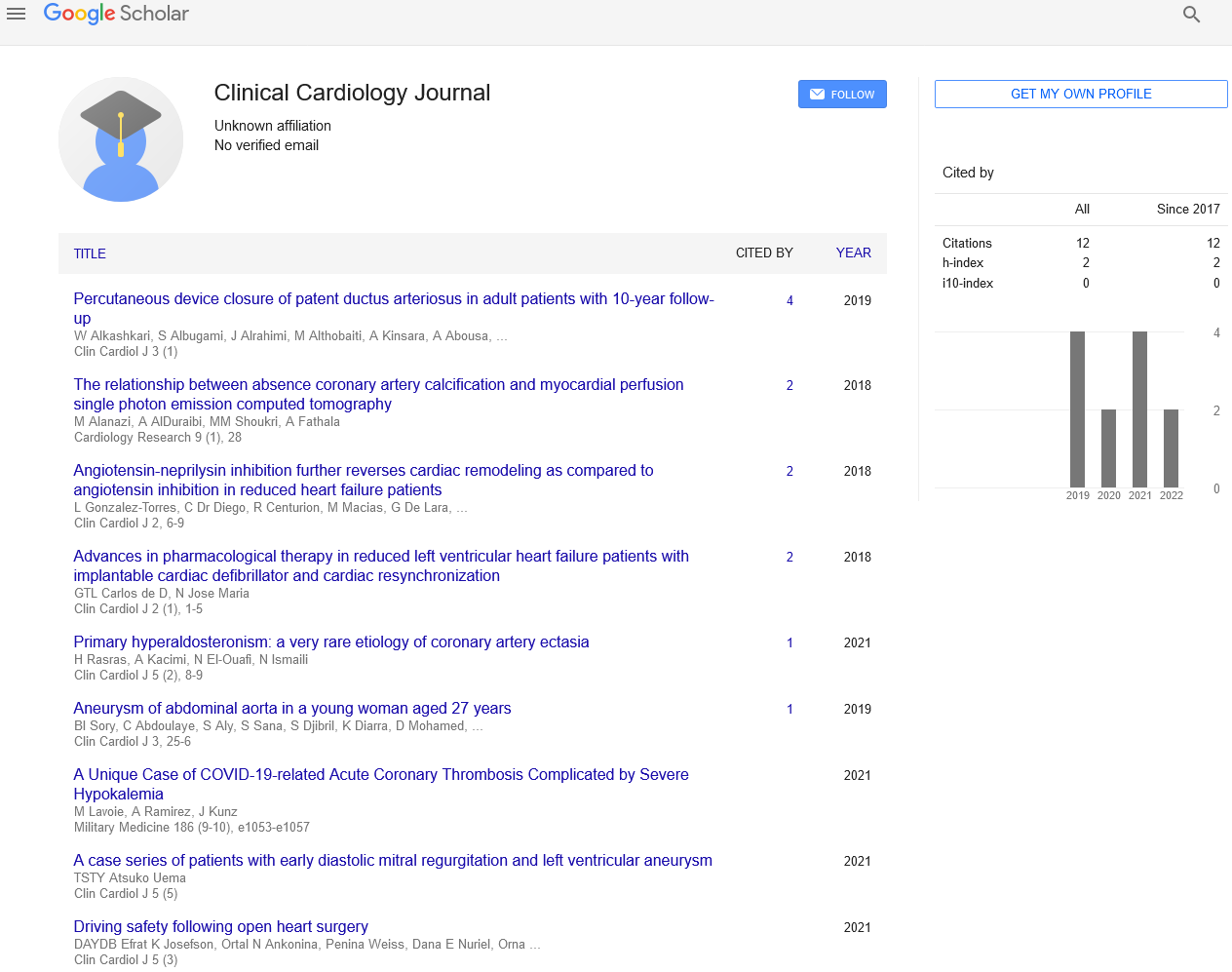
Sign up for email alert when new content gets added: Sign up
Analysing novel regulators that may affect vascular integrity and function
International Conference on Heart Congress, Vascular Biology and Surgeon’s Meeting
December 04-05, 2017 Dallas, USA
Vishwanie Budhram-Mahadeo
University College London, UK
ScientificTracks Abstracts: Clin Cardiol J
Abstract :
Arterial stiffness is associated with chronic hypertension and strongly linked to adverse vascular changes commonly associated with ageing and metabolic diseases e.g. type 2 diabetes. Such changes arise in response to stresses/injuries that transform vascular smooth muscle cells (VSMCs) from differentiated cells into proliferative, migratory phenotypes that synthesise extracellular matrix (ECM) proteins such as collagen 1 (Col1). However, the factors that control phenotypic switching in VSMCs are not clear. I will present results of recent studies which have identified the Brn-3b/POU4F2 transcription factor (TF) as a potentially novel regulator of VSMC fate which may link vascular integrity and function to metabolic function. Brn-3b is expressed in aortic VSMC and Brn-3b knock-out (KO) mutants have reduced arterial compliance and hypertension linked to hyperglycaemia at relatively young ages (by 2 months) and this is associated with significant remodelling in large blood vessels such as the aorta e.g. increased extracellular matrix (ECM) protein deposition, neo-intimal hyperplasia etc. As a transcription factor, Brn-3b can act as a master switch to control which genes are produced in cells. High throughput RNA sequencing analysis has identified significant changes in genes that are required for maintaining vascular integrity when comparing aortas from Brn-3b KO mutants with normal control tissues. Moreover, we have characterised the effects of this regulator in controlling expression of ECM such as Col1a1, which are deregulated in vascular diseases. These findings will increase our understanding of the factors that are required to maintain healthy blood vessels, but also identify how Brn-3b may prevent stiffening to blood vessels and whether its loss is associated with vascular disease development and progression.
Biography :
Vishwanie Budhram-Mahadeo has been actively involved in medical research since 1992 and is currently a Tenured Scientist, working as a Principal Investigator (PI) within the UCL Institute of Cardiovascular Science. Her main research interest is focused on elucidating the mechanisms controlling transcriptional regulation of tissue-specific gene expression and cell fate in normal tissues (during embryogenesis or in adults) and changes which contribute to disease initiation or progression [e.g. cancer, cardiovascular disease (CVD) and metabolic diseases e.g. obesity and type 2 diabetes]. The studies utilized the related homeobox transcription factors, Brn-3b/POU4F2 and Brn-3a/POU4F1, to show how complex regulatory effects can be mediated, depending on cell type specificity and/ or growth conditions. Data from this research has been pivotal for establishing novel paradigms to explain how different transcription factors can drive similar or antagonistic effects on key cellular functions. e.g. proliferation, survival/apoptosis or differentiation, depending on co-expression and interactions with other regulators such as the p53 tumor suppressor protein. More recently, novel roles for these regulators in the cardiovascular system and potential links to metabolic dysfunction have begun to identify increasing complexity for these regulators in controlling cell fate either during development or in disease.




